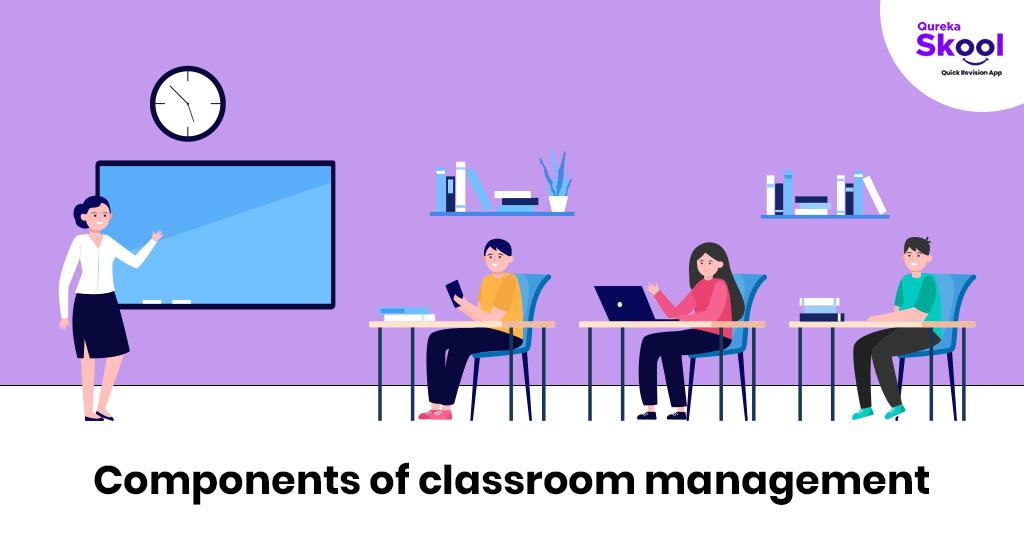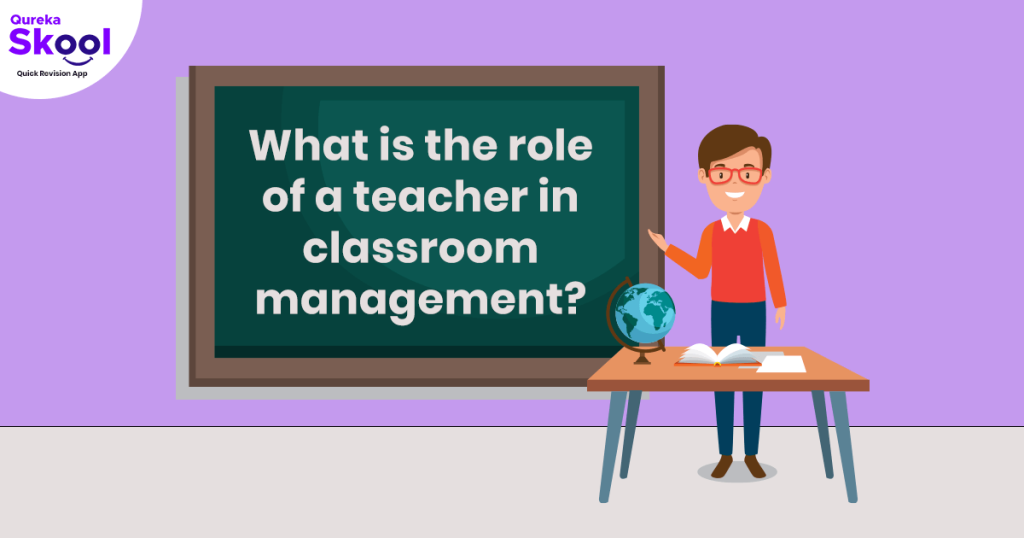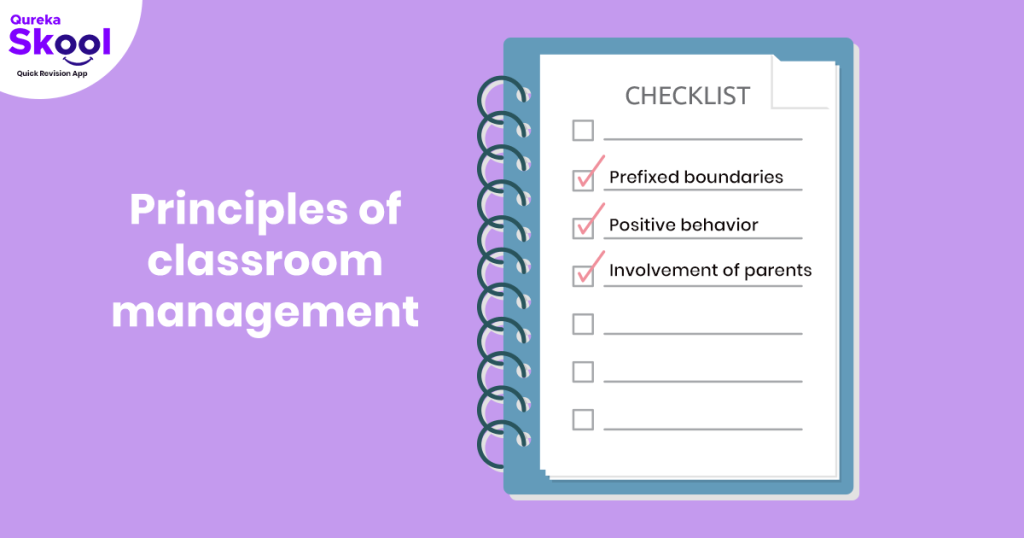
A classroom is a place where students learn new things and enhance their knowledge. Such places require proper management as there are many students in a classroom simultaneously.
Sometimes students are engaged in chatting or creating any kind of ruckus, this type of environment is not suitable for learning. This is where classroom management comes in.
Classroom management is the process of creating and maintaining an organized, safe, and positive learning environment. It involves effective communication, rules and procedures, and a positive relationship with students. It might sound tough but it is not impossible to maintain decorum in class.
Classroom management is important because it helps create a learning environment that is conducive to student success. When students feel safe and comfortable in their learning environment, they are more likely to be engaged and motivated to learn. Additionally, having well-managed classrooms can help reduce behavioral problems and disruptions.
There are many different approaches to classroom management, but some common elements include establishing class rules and procedures, maintaining a positive relationship with students, communicating effectively, and using data-driven decision-making. Good teaching skills also come in handy while trying to maintain proper classroom management.
Read more on classroom management here!
Table of Contents
Role of teacher in classroom management

The teacher plays a vital role in classroom management. They are responsible for creating a positive learning environment, maintaining order and discipline, and ensuring that students are engaged in the lesson.
Teachers with good teaching skills will use a variety of strategies to keep their classrooms running smoothly. They will establish clear class rules and procedures at the beginning of the year and review them regularly with their students. They will be consistent in their expectations and consequences, and they will make sure that all students are aware of the expectations.
Teachers need to be proactive in their approach to management. They should be constantly observing their students and looking for ways to prevent problems before they start. They should also be quick to address any issues that do arise.
Classroom management is a vital part of the teaching process. It takes a great teacher to create proper management in class. Classroom management can make the difference between a successful classroom and one that is chaotic and unproductive.
It is very important to create a positive environment in the class and this majorly depends on the teacher. A positive learning environment can be created by using attractive instructional methods and providing opportunities for student input. This will lead to a climate of respect and cooperation, where students feel safe to take risks and ask questions. When problems do arise, the teacher will address them quickly and efficiently to minimize disruption to the learning process.
Now, let’s imagine if everything goes well then what would that classroom look like?
What does successful classroom management look like?

Management is the key to having a successful classroom. Successful classroom management will have the following elements.
# It’s not just about being quiet
Good classroom management is so much more than trying to make students sit quietly. Such a classroom has an apt environment for learning as most of the students are engaged in the process of learning.
# Crystal clear rules
A teacher who maintains proper classroom management is well aware of the rules that he/she needs to maintain in the class. The rules in such a class apply equally to every student without any bias. Also, the teacher makes sure everyone gets the rules clearly.
# No space for disorganization
An organized classroom is conducive to proper classroom management. An organized classroom might seem unimportant but a clean place with properly placed desks and chairs created a natural sense of discipline among the students.
# Captivating discussions and lessons
Students love interactive lessons. A key to retaining the focus of students is to create a comfortable environment where students can clear all their doubts without hesitation. Captivating discussions over important topics often lead to clearer concepts.
# Easy-to-follow routine
Successful classroom management is built on routine work. The students and teachers follow a particular routine that they all are familiar with. Following the routine leads to everyone being on the same page when the day starts.
Check out this article on study routine to help your students create their tailor-made routines!
# The expectations are clear
The students of such a classroom are well aware of what is expected of them. They know the importance of discipline.
What are the 5 principles of classroom management?

The five principles of effective classroom management are:
Subject knowledge
The first and foremost important principle of classroom management is the subject knowledge of the teacher. The whole management of the class is done to ensure a smooth flow of knowledge in the class. Without proper subject knowledge, a teacher cannot give his/her 100%.
Create your own set of quizzes on the Qureka Skool app now for your students!
Setting boundaries
A classroom cannot be properly managed without proper boundaries, rules, and expectations. All these things make it easier for the teacher to take the young minds in the class in one direction.
Promoting positive behavior
Both the language and body language of a teacher affects the students deeply. A teacher can set a positive tone for the class through his/her words and actions. You may question the need for a positive tone in the class.
Well, a positive tone in the classroom is required to make the students feel comfortable. Students have been shown to ask a higher number of doubts and discuss their ideas in a positive environment. This also develops a curiosity in students.
Building meaningful relations with students
An environment of mutual respect and care is important for humans. Connecting on much deeper levels gives the teacher a natural authority over the students. Building meaningful relations with the students help the teacher in controlling the class without much effort as the students are already eager to meet and listen to their favorite teacher. One must know that such relations are not built overnight and they might take some time.
Role of parents and guardians
Parents and guardians are an important part of every student’s life. The final authority of the student lies with them and it is the duty of the teacher to keep them informed about the children. The same thing goes with the parents and guardians as they need to support the teachers so that they can carve out the best possible personality of the student.
Tips for good classroom management
There are many different tips and strategies that can be used to help manage a classroom effectively. Here are just a few that might be useful:
- Involve students in creating classroom guidelines
- Make sure all students are aware of the class rules.
- Be consistent with enforcing the rules.
- Use positive reinforcement (praise, rewards, etc) whenever possible to encourage good behavior.
- Make sure your own behavior is exemplary at all times.
- Plan ahead and be well organized so that lessons run smoothly.
- Keep a close eye on students during class time and intervene if necessary.
- Be available to speak to parents or guardians if there are any concerns.
- Analyze the needs of the students and adopt a flexible approach toward their problems.
Some FAQs on classroom management
Q.1 Is critical thinking part of teaching skills?
Critical thinking is a very important skill and definitely a part of teaching skills. Critical thinking includes observation of available facts to find the solution to a particular problem.
Q.2 What is the role of awards and recognitions in classroom management?
Awards and recognitions by the teacher are better than using harsh language and giving punishments. Such gestures create a positive environment in the class.
Q.3 Give two examples of basic classroom rules.
Here are two basic classroom rules:
Respect everyone in the class and arrive on time for the class
Q.4 Is it common to have students with bad behavior?
Yes, it is very normal to have students with bad behavior and such students can be molded through continuous efforts.
Follow us on Insta and Facebook for more such content! We hope you enjoyed reading this article. Do comment below to express your views on classroom management.
